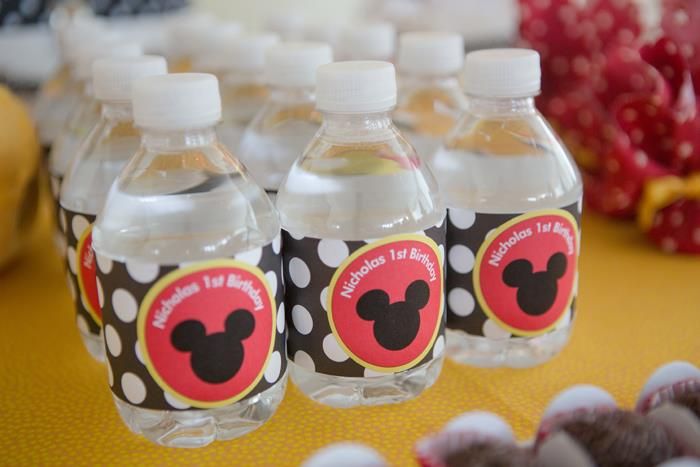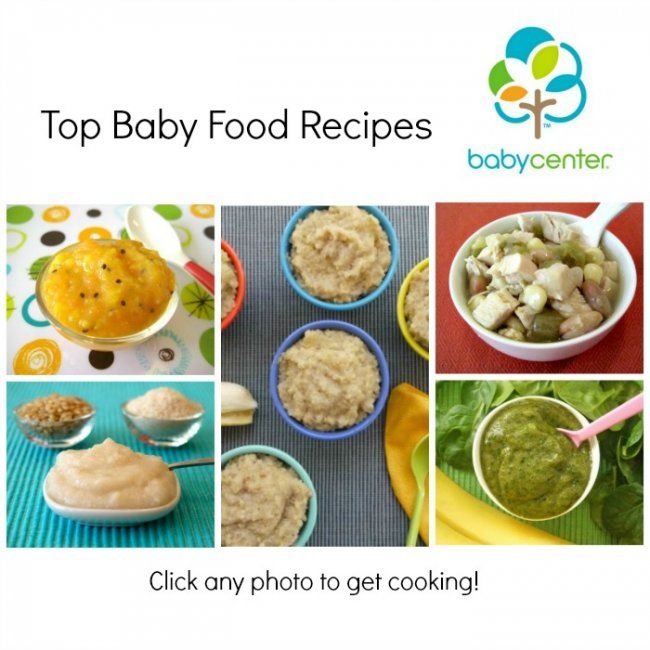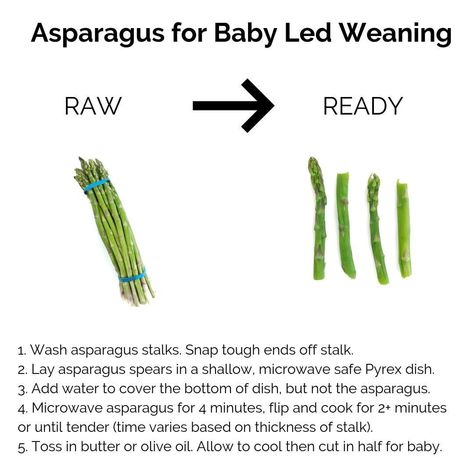Baby food pots with lids
Baby Food Storage Containers (For All Budgets)
Find the best baby food storage containers in glass, BPA-free plastic, and stainless steel, with options for jars, containers, reusable pouches, lidded bowls and more. I’ve included options for all budgets that will last and last!
Baby Food Storage Containers
Make the most of all of that nutritious baby food—whether purees, BLW, or finger foods–with the best baby food storage container options. These will help you safely store food in the fridge and freezer, and give you options for packing for daycare, too.
Included in this post are containers made from glass, stainless steel, and BPA-free plastic. I have a mix of jars, bowls with lids, reusable bags, reusable pouches, and more so you can use what works best for your life and routine.
Best Glass and Ceramic Baby Food Storage Containers
Glass and ceramic storage containers are safe from any potential issues you may find with plastic, are easy to clean, are durable, and last for years. You can reuse them again and again without issue and they come in a range of sizes for storing baby food—and then kid food as the littles grow.
WeeSprout Jars
These jars, which come in both 4- and 8-ounce sizes, are amazingly useful. We’ve used them daily for over a year and have never had an issue with them. They are easy to clean, the lids screw on tightly, and they are incredibly durable.
AIGI Ceramic Containers
These ceramic containers are another wonderful option, especially for storing slightly larger portions. They are great for leftovers, meal-prepping, and even serving the baby food as a bowl.
How to Freeze Baby Food
Freezing baby food, whether as a way to store leftovers or as a way to batch cook it, is easy and helpful. You can simply add the baby food to an ice cube tray, freeze the cubes, then transfer the cubes to a freezer bag for longterm storage.
To thaw, place 1-2 cubes (or more, according to the portions your baby is eating) in a container in the fridge overnight.
You can also freeze baby food in reusable pouches.
Favorite Reusable Pouches for Baby Food
Reusable pouches are a great way to store baby food in both the fridge and the freezer. There are a lot of options and my favorite ones are below.
Squeasy Gear
This has long been one of my favorite baby feeding products as it’s one of the few reusable pouches that doesn’t come with the possibility of a mess—there’s a little guard that prevents baby from squirting out the food (whether on purpose or by accident).
It’s easy to clean, comes in a few different sizes (we like to start with the 3.5 ounce one) and can store baby food in the fridge or freezer.
Weesprout Reusable Pouches
BPA-free plastic pouches are easy to fill (they fill from a zipper that opens and closes along the bottom) and store wonderfully in the fridge and freezer. This is a helpful way to portion out baby food and have it ready to go.
To wash, remove the screw-top and open the bottom. Let water run through and use a small bottle brush as needed to clean. Prop open to dry on a bottle drying rack.
Let water run through and use a small bottle brush as needed to clean. Prop open to dry on a bottle drying rack.
Best Baby Food Bowls with Storage Lids
Having a bowl or two with a tight fitting lids means that it’s easy to serve and store baby food in the same container. These silicone bowls from WeeSprout are a great option that you can use throughout childhood. They’re easy to clean and are freezer and dishwasher safe.
Favorite BPA-Free Plastic Baby Food Containers
With all of the options for plastic containers on the market, it can be hard to know which ones really last. My two favorite are below, which I recommend after 6 years of real-life testing. These are the only two brands that have held up to repeated washings and haven’t scratched easily.
Beaba Clip Containers
These containers, which come in a few sizes so you can use the one that fits your purpose, stack for easy storage. They are easy to clean and made from a safer type of plastic. The lids screw on tightly enough to store liquids and purees.
The lids screw on tightly enough to store liquids and purees.
They’re also great for finger foods.
Replay Recycled Snack Stackers
These colorful containers are great for snacks and also for storing food in the fridge or pantry. They are made from recycled milk jugs and twist together for easy storage.
Best Stainless Baby Food Containers
Stainless is a great option for food storage since it’s a safe material that tends to be very durable. It’s also very easy to clean. The downside is that you can’t heat food in this container, so you’d have to transfer it to another if you need to warm it up. My favorite options are below.
WeeSprout Stainless Food Containers
Sold in a set of three, these stainless containers come with tight-fitting silicone lids. They are perfect for storing any type of baby food and are safe in the fridge, freezer, and dishwasher.
Everusely Stainless Containers
Sold as containers for salad dressing, these stainless containers are actually a great size for baby food at just under 2 ounces.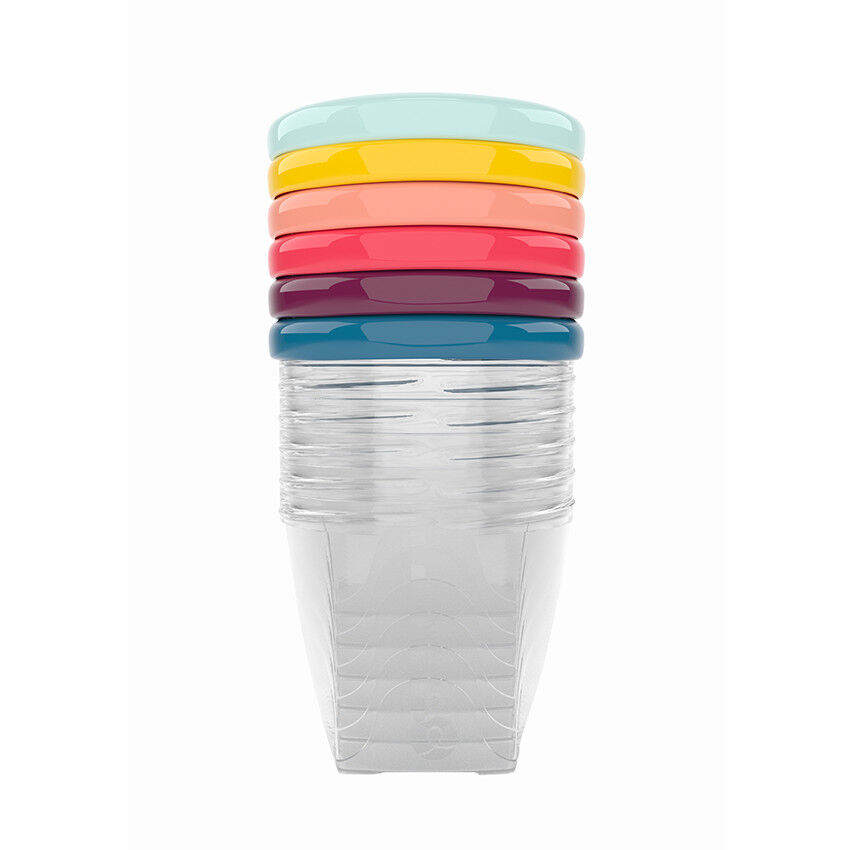 And then you can use them for years to come!
And then you can use them for years to come!
Frequently Asked Questions
Is it better to store baby food in glass or plastic?
You can use either. If using plastic, look for BPA-free plastic and avoid putting it into the microwave or dishwasher to help the plastic stay in tact. Discard it if you see any scratches.
What is the best way to store homemade baby food?
You can store homemade baby food in the fridge in small containers for up to 5 days, or you can freeze it in reusable pouches or in ice cube trays. If doing ice cube trays, transfer the frozen cubes to a freezer bag for longer term storage.
Is it safe to store baby food in plastic containers?
It can be. Look for BPA-free plastic and avoid putting it into the microwave or dishwasher to help the plastic stay in tact. Avoid acidic food like citrus or tomato-based foods, as those can break down the material, too. Discard it if you see any scratches.
Discard it if you see any scratches.
Best Tips for Success
- Care for your storage containers according to manufacturer’s directions.
- To lengthen the life of BPA-free plastic, hand wash it rather than putting it into the dishwasher.
- Let dry fully before storing.
- Check out my fav Snack Containers for more food storage options.
Related Recipes
I’d love to hear your feedback on this post, so please comment below to share!
Baby Food Lids - Etsy.de
Etsy is no longer supporting older versions of your web browser in order to ensure that user data remains secure. Please update to the latest version.
Take full advantage of our site features by enabling JavaScript.
Find something memorable, join a community doing good.
(383 relevant results)
How to use empty baby food jars?
Are you a new mother? Then, probably, glass baby food jars appeared in your life, which the hand does not raise to throw away. There are already a lot of them in my house, so I propose to discuss how they can be useful to us.
There are already a lot of them in my house, so I propose to discuss how they can be useful to us.
I conducted a small survey of colleagues and friends on this topic. The results are as follows:
Lena keeps her branded adjika in jars - it is convenient to take it in such a container for a picnic, for example. nine0003
Stores dried berries for tea.
He also arranges small tasty gifts for his friends - homemade jam. Arranges in jars, decorates them and gives them.
The last idea caught my attention - I like to make homemade jam. I took note of such a sincere gift option.
Zhenya keeps medicinal ointments in jars. Also a great option, given the odor of such drugs, as well as their small volumes. nine0003
Anya uses the jars as a sugar bowl and salt shaker on long journeys. Or for a picnic. She also keeps beads for needlework in them.
I tried to use jars for leftover canned cod liver. And this, I tell you, is extremely convenient. Open canned food should not be stored for longer than a day, and it is imperative to transfer food to a container, preferably glass. And the baby food jars are perfect! Small, hermetically sealed (which is especially important in the case of products with the smell of fish), and then it is not a pity to throw them away. nine0003
I also put paper clips in one jar. There was an open package at home, now the paper clips are neatly stored in a jar.
Inspired by the opening horizons for the second life of jars, I began to look for other ways to use them. I searched websites and social networks. I confess, I am delighted with the fantasy of young mothers, and dads too!
How to use baby food jars
Use jar lids in children's educational games:
- stick pieces of colored paper on them and arrange them in containers by color,
- stick drawings with letters on them and add syllables and words,
- make a slot in the lid of the milk formula jar (or in a box of chips, for example) and put the lids into it, like in a piggy bank,
- make a fishing rod out of a pencil, string and magnet and arrange "fishing", collecting caps.
Use cans:
- for dipping the brush while painting with watercolors,
- for seedlings of flowers or greenery,
- as small vases for small wildflowers,
- for storing spices,
- as a home air fragrance: put a piece of cotton wool into a jar and moisten the cotton wool with a drop of perfume or essential oil. If you decorate a jar - it’s not a shame to replace the sachet and put it in a prominent place in the house,
- for needlewomen - to store small items such as buttons, beads, etc. in jars,
- use as a portion dish in candy bars that are so popular now at children's parties,
- colorize and turn the jar into a candlestick by putting a pill candle into it,
I found candle-tablets. It's a sin not to try, I decided. I’m not friends with paints yet, I found a satin ribbon. Half a minute to tie it, and voila! Modest, but also an option. nine0003
nine0003
But finally I was subdued by such decor of the can.
Using a jar as a photo frame is original, isn't it?
And also, I think, it may not even be interesting to search for the use of jars or lids, but the process of decorating itself. Space for imagination, yours and your child!
How to decorate jars
• Spray paint or decorate with acrylic or stained glass paint,
• Paste over the jar with double-sided tape and roll in sequins or beads,
• Use the decoupage technique (stick a beautiful napkin with a pattern on the jar), since there is an abundance of materials for needlework on sale now,
• Stick lace, ribbons, fabric on the jar,
• Paste clippings from magazines or newspapers - looks very interesting.
nine0002 • Wrap the jar with threads or decorative straws.
And then, together with the child, figure out what to put in a beautiful jar.
There is only one “but” in the active use of cans for various needs. Given the presence of a baby in the house, do not forget to check their inaccessibility for his ubiquitous little hands. Glass is beautiful, reliable and environmentally friendly, but dangerous. So, subject to safety conditions, cheers for jars!
Can you share how you use baby food jars? Do you leave or throw away? Decorate or use as is? Join the discussion in our groups VKontakte , Facebook and Instagram!
How do I check baby food packaging for defects?
When buying baby food, pay attention not only to the composition of the product and the expiration date, but also to its packaging. The product in a convenient package will make parental life a little more comfortable. And by checking the integrity and tightness of the container, you will avoid buying a product that cannot be eaten.
Baby food can be found on store shelves in a variety of packaging. Classic glass jars for one snack, tetra-pack boxes, plastic cups and bottles, soft pouch bags - each type of packaging has its own characteristics, pros and cons. Let's take a look at how the material from which the packaging is made affects the characteristics of the product you buy. nine0003
Classic glass jars for one snack, tetra-pack boxes, plastic cups and bottles, soft pouch bags - each type of packaging has its own characteristics, pros and cons. Let's take a look at how the material from which the packaging is made affects the characteristics of the product you buy. nine0003
- Glass
Typically, baby food manufacturers pack fruit, vegetable, meat purees, as well as everything that is similar in consistency, such as pâtés, into glass jars. It is convenient to heat the product in a water bath or in a special heater. The advantages of glass containers are in the environmental friendliness and safety of the material. Glass is chemically neutral and does not react with the contents of the jar, it is easy to recycle. It ensures the safety of the product throughout the entire shelf life, if the storage regime is observed correctly (do not allow freezing or exposure to direct sunlight, twisting or damage to the lid). Glass jars are great for feeding your baby at home when you have a spoon and utensils handy to warm up the food. The disadvantage of glass is its fragility: there is hardly a single parent in the world who has never accidentally broken such a jar of food. nine0003
Glass jars are great for feeding your baby at home when you have a spoon and utensils handy to warm up the food. The disadvantage of glass is its fragility: there is hardly a single parent in the world who has never accidentally broken such a jar of food. nine0003
How to check glass packaging?
Improper transport or storage can cause defects even in safe glass containers. From impact, shaking or temperature changes, the lid may be deformed, and the jar will no longer be airtight. Incorrect storage or an expired expiration date may cause the lid to bulge. Jars with cracks, chips, swollen or bent lids should not be bought. And be sure to pay attention to the sound when you open the lid - you should hear a light but distinct pop. This is a guarantee that the contents can be given to the child. No cotton? Such food should not be given to a child. nine0003
2. Cardboard
Cardboard boxes are usually filled with products of a liquid consistency - juices and nectars, milk, milkshakes, compotes, fruit drinks. They also pack vegetable and fruit puree soups, cereals. Although the box is called a cardboard box, in fact, the packaging consists of several layers of different materials - in addition to cardboard, it has a thin plastic film and aluminum foil. Such a "layer cake" becomes an effective barrier against the external environment. Sealed packaging retains all vitamins and useful trace elements and does not let the sun's rays through, unlike transparent glass. Boxes are easy to store, withstand impact better, and weigh less than glass containers. True, recycling composite materials is much more difficult than glass. nine0003
They also pack vegetable and fruit puree soups, cereals. Although the box is called a cardboard box, in fact, the packaging consists of several layers of different materials - in addition to cardboard, it has a thin plastic film and aluminum foil. Such a "layer cake" becomes an effective barrier against the external environment. Sealed packaging retains all vitamins and useful trace elements and does not let the sun's rays through, unlike transparent glass. Boxes are easy to store, withstand impact better, and weigh less than glass containers. True, recycling composite materials is much more difficult than glass. nine0003
How to check cartons?
Often the boxes are equipped with a plastic tube and a hole for it - or a lid with a "window" covered with a foil membrane. It happens that unscrupulous buyers in the store open this membrane or it is torn during transportation. Be sure to check that the foil is in place, does not move away from the edge or is torn.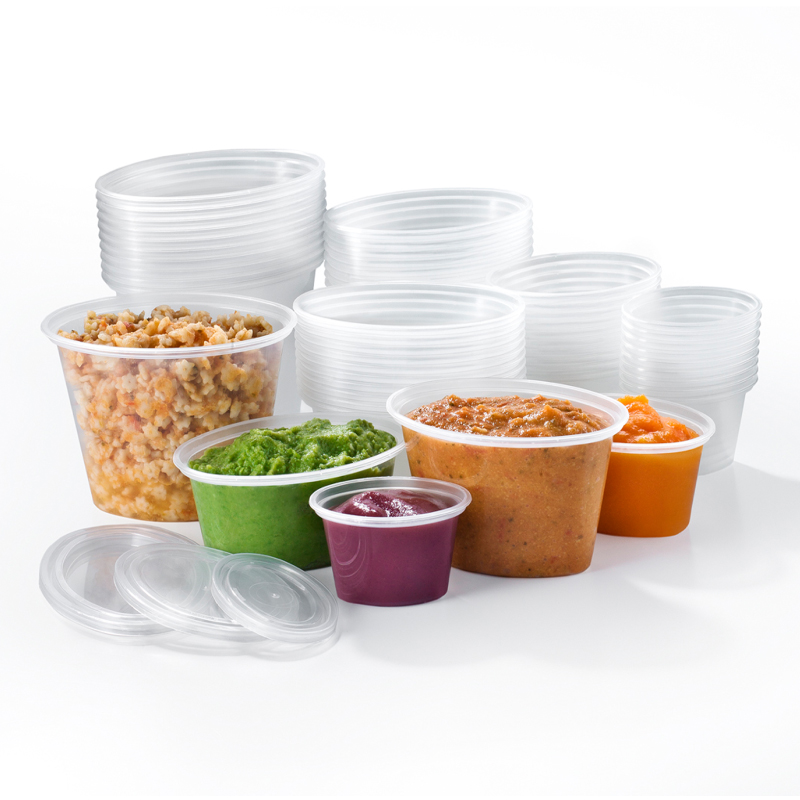 If the box has a screw-on plastic lid, make sure that the lid fits snugly on the package and does not move away from it, and that all the “locks” under the lid are intact. There should be no cracks, dents, swellings on the box..
If the box has a screw-on plastic lid, make sure that the lid fits snugly on the package and does not move away from it, and that all the “locks” under the lid are intact. There should be no cracks, dents, swellings on the box..
3. Plastic
Plastic containers and bottles usually sell children's dairy and fermented milk products - cereals, biocurd, drinks like yogurt or kefir. As a rule, they are closed with a special foil membrane. Such jars are light weight and do not break when dropped - this is their big plus. But upon impact, the plastic can be deformed, and the foil lid can tear, and then pathogenic microorganisms from the external environment will enter the contents. nine0003
At the production stage, the ingress of pathogenic microorganisms into the product is completely excluded: all processes are completely closed and automated, and the finished product undergoes the strictest control.![]() When buying, it is very important to check the integrity of food packaging to make sure that you are buying a healthy, tasty and safe product”, — Olga Krasnikova , Quality Director of PROGRESS JSC (FrutoNyanya brand) comments on .
When buying, it is very important to check the integrity of food packaging to make sure that you are buying a healthy, tasty and safe product”, — Olga Krasnikova , Quality Director of PROGRESS JSC (FrutoNyanya brand) comments on .
How to check plastic packaging? nine0152
On visual inspection, plastic cups and bottles must be intact, without dents. Pay attention to the lid - it should fit snugly on the package and not be torn anywhere.
4. Puree Pouches
Pouches are a relatively new type of packaging, but many parents have already appreciated its absolute convenience. These are pouch-like bags made of soft but dense plastic with a screw-on plastic lid. Mashed potatoes and pureed desserts are packaged in such bags - something that can be given to the baby on the road so that he holds the pouch with his hands, squeezes food out of it and can eat on his own. Thanks to a special spout, parents can forget about the risk of getting everything dirty.


